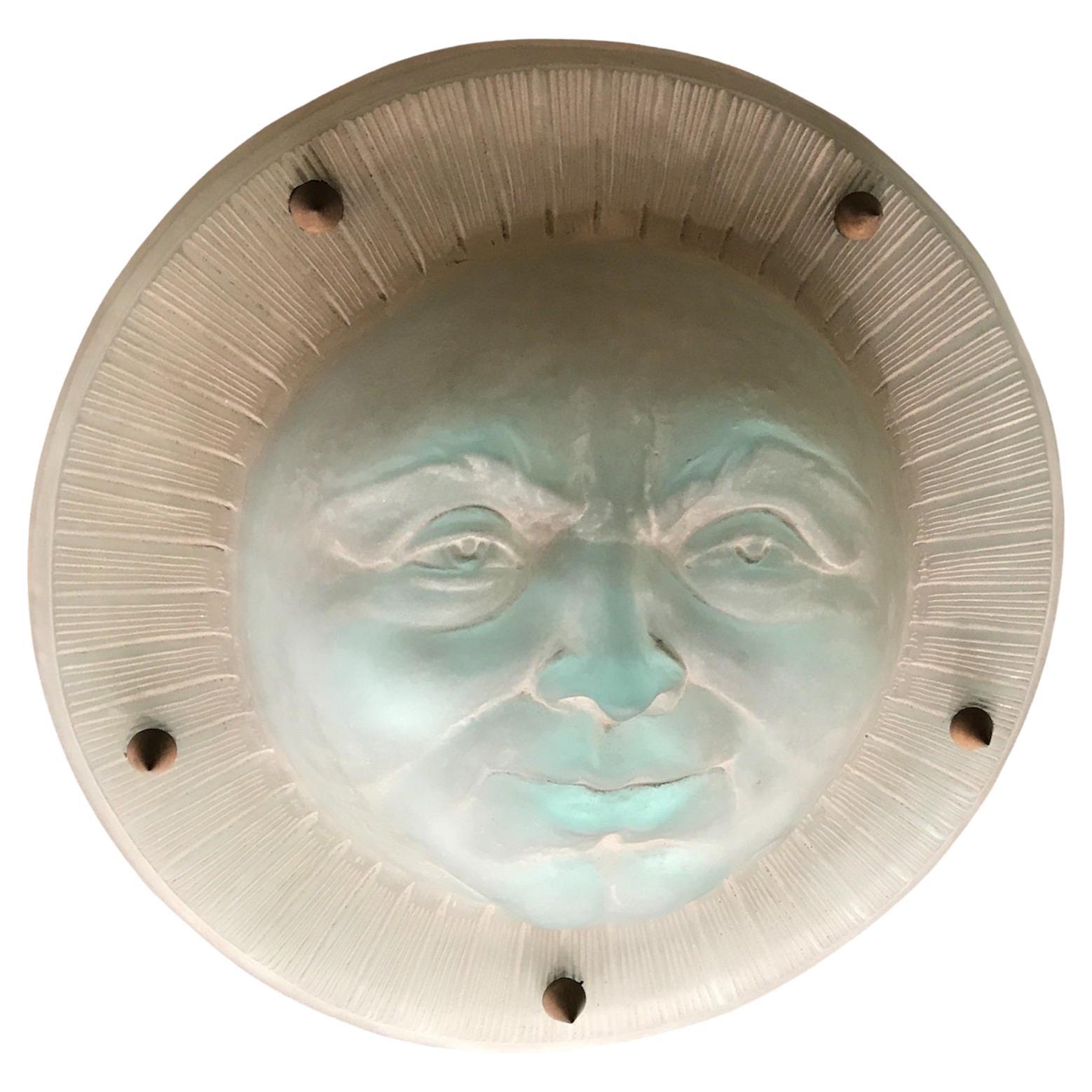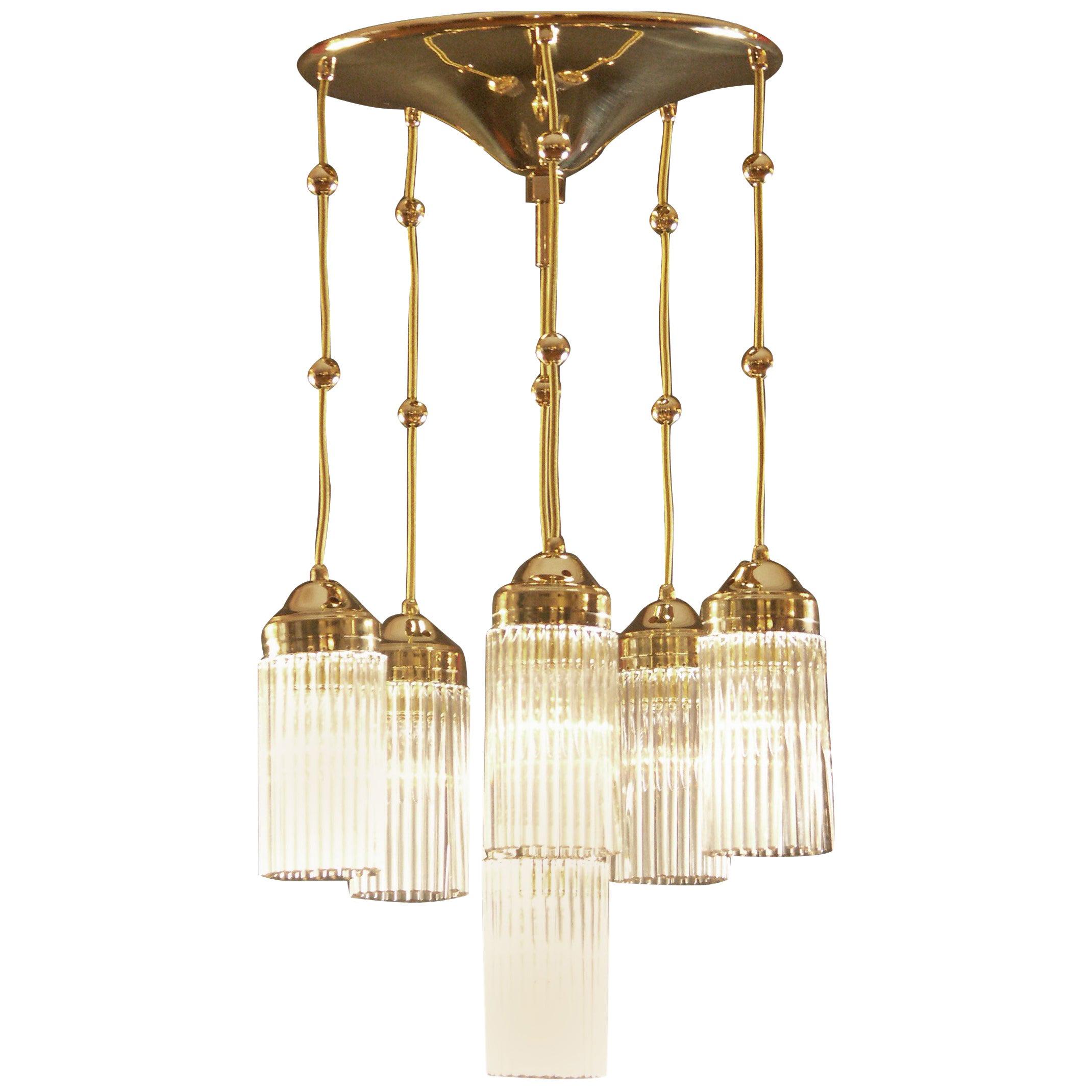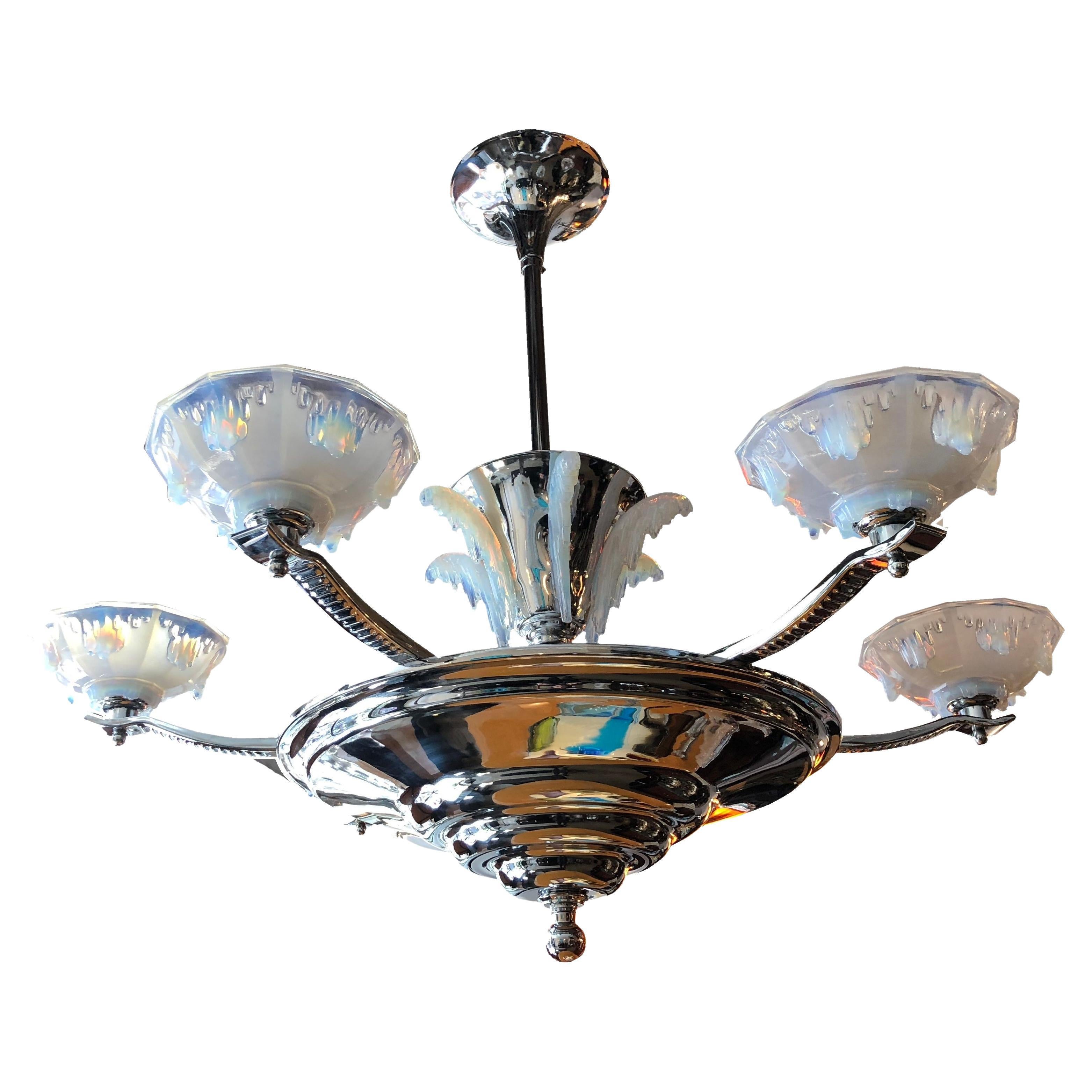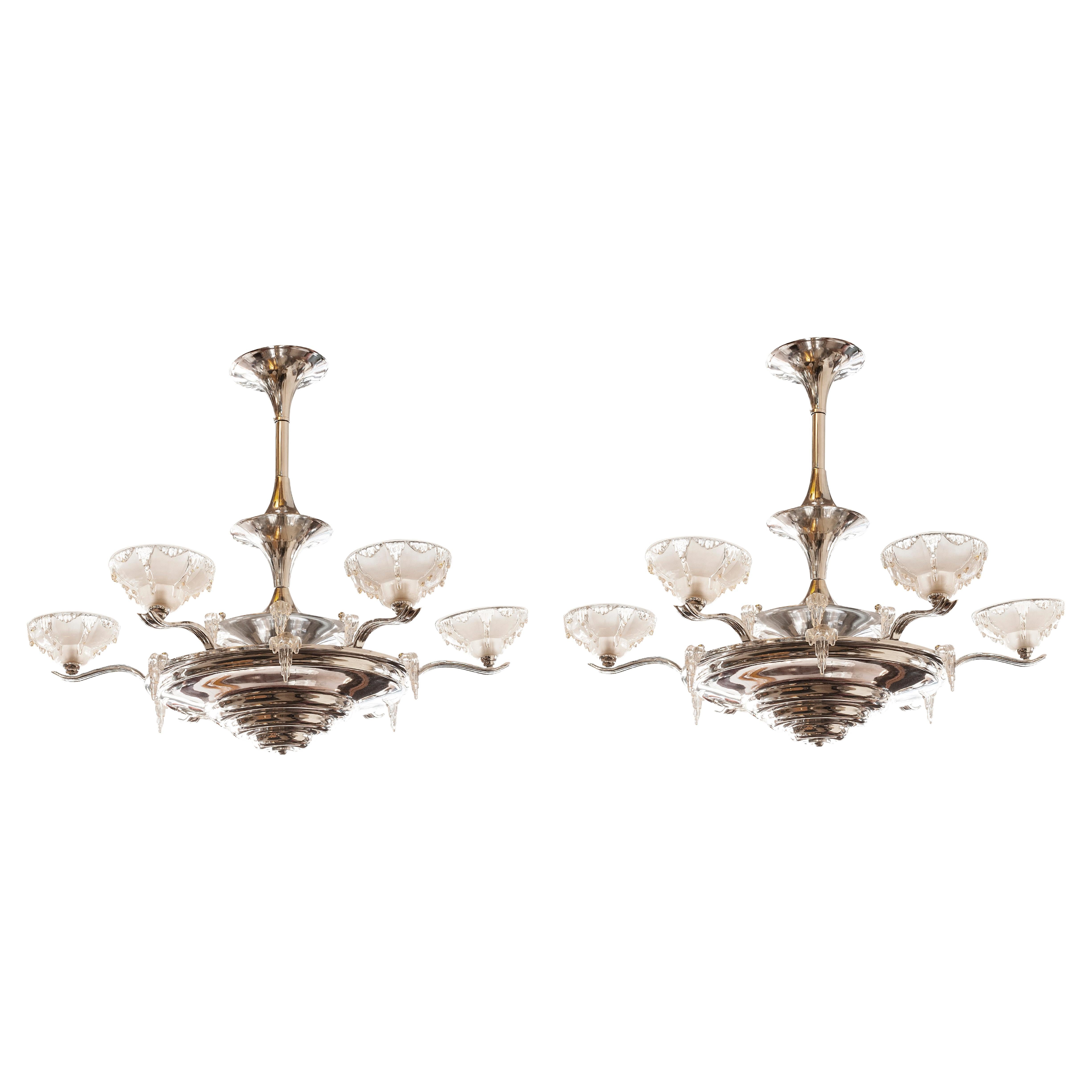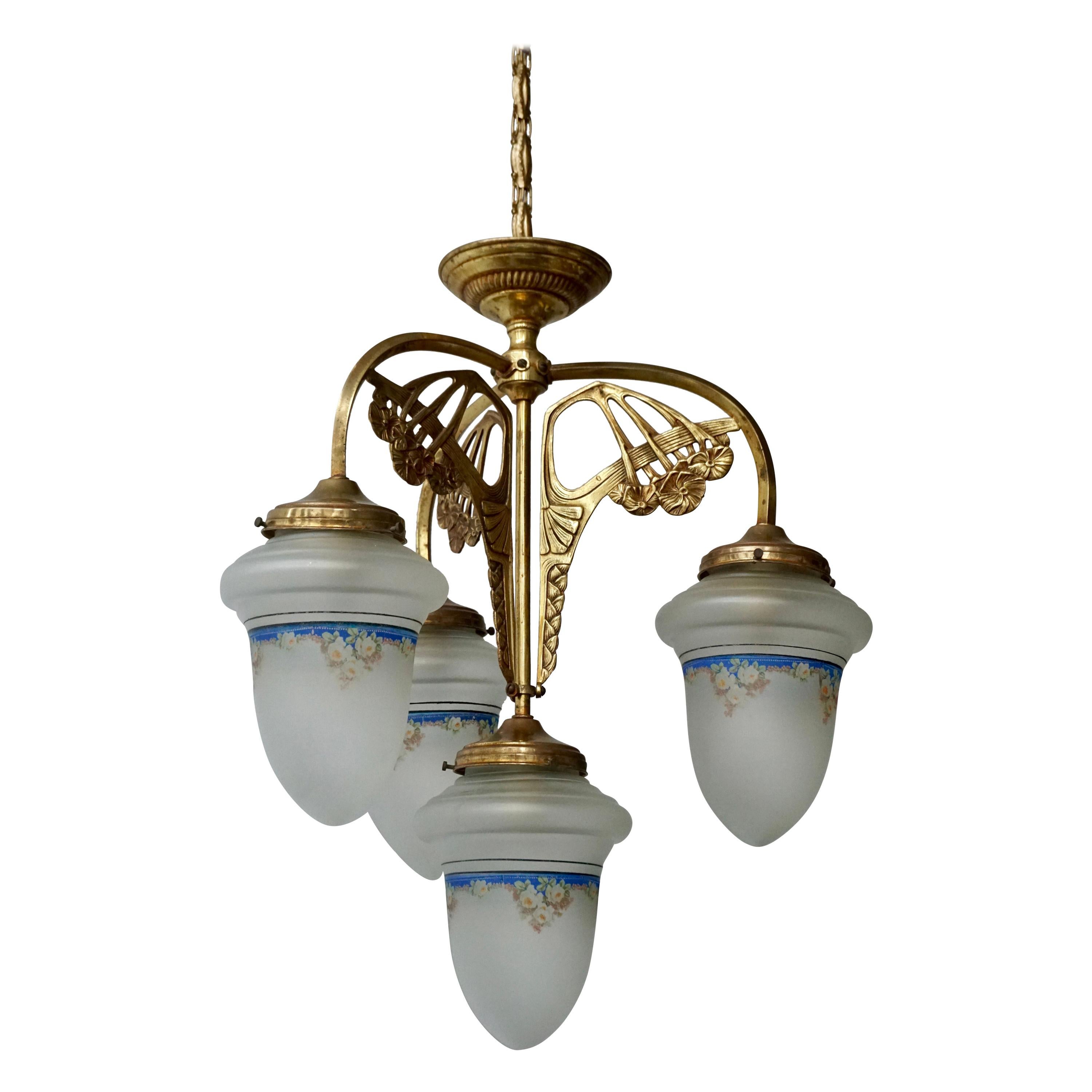Items Similar to Chandelier Jugendstil, Art Nouveau, in Glass and Iron, Year 1900, Country French
Video Loading
Want more images or videos?
Request additional images or videos from the seller
1 of 13
Chandelier Jugendstil, Art Nouveau, in Glass and Iron, Year 1900, Country French
About the Item
Chandelier Jugendstil, Art Nouveau, Liberty
Year: 1900
Country: French
Glass and Iron
It is an elegant and sophisticated Chandelier
We have specialized in the sale of Art Deco and Art Nouveau styles since 1982.If you have any questions we are at your disposal.
Pushing the button that reads 'View All From Seller'. And you can see more objects to the style for sale.
If you are looking for sconces to match your ceiling lighting, we have what you need.
Art Nouveau is an international style of art, architecture, and applied art, especially the decorative arts. The style is known by different names in different languages: Jugendstil in German, Stile Liberty in Italian, Modernisme in Catalan, and also known as the Modern Style in English. Art Nouveau was popular during the Belle Époque period that ended with the start of World War I in 1914.[1] It was a reaction against the academic art, eclecticism and historicism of 19th century architecture and decoration. Other characteristics of Art Nouveau were a sense of dynamism and movement, often given by asymmetry or whiplash lines, and the use of modern materials, particularly iron, glass, ceramics and later concrete, to create unusual forms and larger open spaces.
It was often inspired by natural forms such as the sinuous curves of plants and flowers.
Why are there so many antiques in Argentina?
In the 1880 – 1940 there was a grate wave of immigration encouraged by the periods of war that were taking place.
1st World War took place between 1914 and 1918
2nd World War took place between 1939 and 1945
The immigrants options were New York or Buenos Aires. Tickets were cheap and in Buenos Aires they were welcomed with open arms, as it was a country where everything was still to be done.
Argentina was the country of new opportunities, labour was needed and religious freedom was assured, in many cases the of the family travel first until they were settled and then the rest of the family members join them.
In the immigrant museum “Ellis Island Immigrant Building” in New York you can se the promotional posters of the boats that would take them to a new life.
Between the years 1895 and 1896, Argentina had the highest DGP (gross domestic product) per capita in the world according to the Maddison Historical Statistics index, this situation arose due to the large amount of food being exported to European countries, which were at war.
The Argentinean ships left the port of Buenos Aires with food, but they returned with furniture, clothes and construction elements, (it´s common to see this the old buildings of the historic neighbourhood of San Telmo, the beams with the inscription “Made in England)”, as well as many markets that were built in Buenos Aires, such us the San Telmo Market, whose structure was brought by ship and afterwards assembled in 900 Defensa Street.
With the great influence of European immigrants living in the country, the children of the upper classes travelled to study in France, resulting in the inauguration of “La Maison Argentinienne”, on 27th of June 1928, in the international city of Paris, which hosted many Argentinians that were studying in Frace.
It´s the fourth house to be built after France, Canada and Belgium, being the first Spanish-speaking one. Still in place today (17 Bd Jourdan, 75014, Paris, France). Many of the children of these wealthy families who attended international art exhibitions, museums and art courses abroad, took a keen interest in the European style. This is why Buenos Aires was at the time referred as “The Paris of South America”.
Between the years 1890 and 1920 more than a hundred Palaces were built on Alvear Avenue the most exclusive avenue in Buenos Aires. Today some of these palaces have been transformed into museums, hotels and embassies.
In the year 1936, the Kavanagh building was inaugurated, it was the tallest reinforced concrete building in South America.
During 1994 the American Society of Civil Engineers distinguished it as an “international engineering milestone”, and it´s now considered a World Heritage of Modern Architecture.
At the time was common to hire foreign architects such as Le Corbusier, who visited Buenos Aires/Argentina in 1929 and in 1948 he drew up the blueprints for a house built in La Plata City (which was declared a World Heritage Site).
In 1947, the Hungarian architect Marcelo Breuer designed “Parador Ariston” in the seaside city of Mar del Plata. After an Argentinean student at Harvard University convinced him to come to Argentina. He worked on an urban development project in the Casa Amarilla, area of La Boca.
The Ukrainian architect, Vladimiro Acosta, arrives in Argentina in 1928 and worked as an architect until que moved to Brazil.
Antonio Bonet, a Spanish architect who worked with Le Corbusier in Paris, arrives in Argentina in 1937, where he carried out several architectural works and in 1938 designs the well-known BFK chair.
Andres Kálnay, of Hungarian origin, made around 120 architectural masterpieces, among which the former Munich brewery stands out, he even made the furniture’s design.
The German architect, Walter Gropius, director of the Bauhaus, lived in Argentina, where he wrote articles for “Sur” magazine and founded in Buenos Aires, an architectural firm with Franz Möller, who was also an architect, where he built two houses.
At the same time several famous designers decided to immigrate to Argentina, among them we can find the well-known French designer, Jean-Michel Frank, who arrived in the country in 1940 and also worked for the Rockefeller family.
Special pieces were made, which were sold exclusively in the country, such as the well-known German company “WMF”, who sold their products by catalogue, which were chosen by the ladies of high society in the list of wedding gifts, as well as the pieces designed by Christofle.
The Swiss sculptor Alberto Giacometti, made special pieces for Argentinean mansions.
In 1904 the first Jansen branch outside Paris was established in Buenos Aires, as the Argentinean clientele demanded a large amount of furniture, from the end of the 19th century to the mid-20th century.
In 1970, the brand Rigolleau Argentina made pieces authorised by Lalique.
The brands Maple and Thompson also set up shop in the country.
The French plastic artist, Marcel Duchamp moved to Argentina in 1918-1919.
Glass signed Gallé, Charder, Leverre, Schneider, Muller and other French firms. They were bought in flower shops and were given to ladies with beautiful floral arrangements.
Some furniture manufacturers travelled to international fairs and bough the patterns to produce the furniture in Argentina, such as the furniture firm Englander and Bonta, who bought the patterns ins Italy.
It is worth mentioning that in Argentina we have the largest community of Italians outside of Italy, as it is estimated that 70 percent of the inhabitants have at least one Italian descendant, followed by Spanish immigrants.
The most Important furniture stores in Argentina:
Comte is founded in 1934 (under the direct management of Jean Michel Frank in 1940).
Nordiska (Swedish company established in 1934).
Churba in 1960, a company that brought foreign designers to present their furniture in the country:
Denmark: (Arne Jacobsen, Finn Juhl, Bender Madsen, Ejner Larsen, Poul Kjaerholm, Hans Wegner)
Sweden: (Hans Agne Jakobsson, Gustavsberg)
United States: (Herman Miller)
Finland: (Lisa Johansson, Folke Arstrom, Tapio Wirkkala, Alvar Aalto, Timo Sarpaneva)
Swedish Factory: (Orrefors)
Italy: (Littala, Vico Magistretti, Emma Gismondi, Gae Aulenti, Angelo Mangiarotti, Elio Martinelli, Gianna Celada, Angelo Mangiarotti, Mario Bellini, Carlo Scarpa)
Finland: (Olivia Toikka)
Plata Lappas (Lappas Silver): a goldsmith shop founded in 1887 in Argentina by Alcibiades Lappas of Greek origin.
In 2019, in Argentina took place “the Art Deco world congress”, in which we participated as hosts invited by Geo Darder, founder of the Copperbridge – Foundation, in which prominent people from all over the world attended to learn about Art Deco in Argentina.
Argentina currently has more than 100 Art Deco buildings and another 90 Art Nouveau buildings throughout the city of Buenos Aires.
Argentina is a country that has not been involved in many wars, which is why it has been a refuge for works of art and antiques from different periods of time, unlike European countries. That is way many collectors, museums and antique dealers from all over the world visit it, you should not miss the opportunity to visit this great country.
Laura Guevara Kjuder, architect.
- Dimensions:Height: 35.44 in (90 cm)Diameter: 19.69 in (50 cm)
- Power Source:Hardwired
- Voltage:220-240v
- Lampshade:Included
- Style:Art Nouveau (Of the Period)
- Materials and Techniques:
- Place of Origin:
- Period:
- Date of Manufacture:1900
- Condition:Rewired. Wear consistent with age and use.
- Seller Location:Ciudad Autónoma Buenos Aires, AR
- Reference Number:
About the Seller
5.0
Vetted Seller
These experienced sellers undergo a comprehensive evaluation by our team of in-house experts.
Established in 1982
1stDibs seller since 2022
21 sales on 1stDibs
Typical response time: <1 hour
- ShippingRetrieving quote...Ships From: Ciudad Autónoma Buenos Aires, Argentina
- Return PolicyThis item cannot be returned.
More From This SellerView All
- Chandelier Jugendstil, Art Nouveau, in Glass and Iron, Year 1900, Country FrenchLocated in Ciudad Autónoma Buenos Aires, CChandelier Jugendstil, Art Nouveau, Liberty Year: 1900 Country: French Glass and Iron It is an elegant and sophisticated Chandelier We have specialized in the sale of Art Deco...Category
Antique Early 1900s French Art Nouveau Chandeliers and Pendants
MaterialsIron
- Chandelier , Style:Jugendstil, Art Nouveau, liberty, Year: 1900, FranceLocated in Ciudad Autónoma Buenos Aires, CMaterials: French glass, iron We have specialized in the sale of Art Deco and Art Nouveau and Vintage styles since 1982. If you have any questions we are at your disposal. Pushing t...Category
Antique Early 1900s French Art Nouveau Chandeliers and Pendants
MaterialsArt Glass
- Chandelier Jugendstil, Art Nouveau, France, Materials: Glass and Chrome, 1900Located in Ciudad Autónoma Buenos Aires, CHanging lamp. Material: Chromed and Art glass. Style: Art Deco. Country: France. To take care of your property and the lives of our customers, the new wiring has been done. If you a...Category
Antique Early 1900s French Art Nouveau Chandeliers and Pendants
MaterialsChrome
- 2 Chandeliers Jugendstil, Art Nouveau, France, Materials: Glass and Chrome, 1900Located in Ciudad Autónoma Buenos Aires, CHanging lamp Material: Chromed and Art Glass Style: Art Deco Country: France To take care of your property and the lives of our customers, the new wiring has been done. If you are l...Category
Antique Early 1900s French Art Nouveau Chandeliers and Pendants
MaterialsChrome
- Art Nouveau Hanging Lamp in silver-plated bronze and alabaster , France, 1900Located in Ciudad Autónoma Buenos Aires, CHanging lamp. Material: silver-plated bronze and alabaster Style: Art Deco To take care of your property and the lives of our customers, the new wiring has been done. We have specia...Category
Antique Early 1900s French Art Nouveau Chandeliers and Pendants
MaterialsAlabaster, Bronze
- Chandelier , French, Style Jugendstil, Art Nouveau, Liberty, 1900Located in Ciudad Autónoma Buenos Aires, CHanging lamp Schneider Material: art glass and Iron Style: Art Nouveau Country: French To take care of your property and the lives of our customers, the new wiring has been done. If...Category
Antique Early 1900s French Art Nouveau Chandeliers and Pendants
MaterialsIron
You May Also Like
- Petite Viennese Jugendstil Art Nouveau Inspired ChandelierBy Woka LampsLocated in Vienna, ATPetite Viennese chandelier Woka edition - six flames.Category
2010s Austrian Jugendstil Chandeliers and Pendants
MaterialsBrass
- Art Nouveau Chandelier in Painted Glass and BrassLocated in Antwerp, BEElegant Italian brass Art Nouveau chandelier with four painted glass shades. Measures: Diameter40 cm. Height fixture 50 cm. Total height including chain 110 cm.Category
Early 20th Century Italian Hollywood Regency Chandeliers and Pendants
MaterialsBrass
- Large French Art Nouveau Hollywood Regency Chandelier in Gilt Bronze Glass BrassLocated in Coimbra, PTArt Nouveau style chandelier or flush mount with petal or shell shaped frosted glass and leaf design brass Measures: Diameter 80 cm Height 30 cm Weight 12 Kg / 28 lb Nine-light bulbs...Category
Mid-20th Century French Art Deco Chandeliers and Pendants
MaterialsBrass, Bronze
- Capricorn Antique Art Nouveau Brass Bronze Chandelier Rarity GlassLocated in Berlin, DEArt Nouveau Brass Chandelier: A Rare Capricorn Marvel Elevate your space with the enchanting allure of our Art Nouveau Brass Chandelier, an exquisite embodiment of timeless beauty a...Category
Antique Mid-18th Century German Art Nouveau Chandeliers and Pendants
MaterialsBrass, Wire
- Large French Art Nouveau Art Deco Ornate Burnished Brass & Cut Glass ChandelierLocated in Coimbra, PTA wonderful ceiling fixture decorated with fine ornaments. In very good condition, original cut glass dome without damages and brass with beautiful patina, France, 20th century. ...Category
20th Century French Art Deco Chandeliers and Pendants
MaterialsBrass
- French Antique Art Nouveau / Art Deco Floral Pendant Light / Chandelier, 1920Located in Ijzendijke, NLGorgeous French antique pedant light late Art Nouveau / early Art Deco 1920 with Floral motive. Stunning Art nouveau design, the shade is shaped like a...Category
Vintage 1920s French Art Nouveau Chandeliers and Pendants
MaterialsBrass
Recently Viewed
View AllMore Ways To Browse
Modern French Country
English Country And French Country
Antique Country Signs
Urban Country
New Year Gift
Country Antique Dining Sets
Family Houses In The Country
Danish Country Style
French Chandelier Set
Antique Chandelier Of Iron
Art Nouveau Glass Pendant
Danish Year 1960
Italian Country Chandelier
Century 19th Country Spanish
French Country Pendants
Country French Glass Case
French Country Iron
French Country Chair 19th Century

